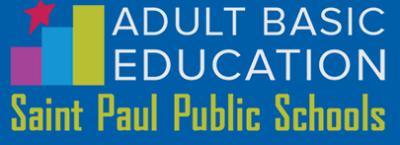- MN ABE Connect
- Archive
- Texting with Talking Points: Supporting Communication and Retention for Multilingual Learners
 April 10, 2023
April 10, 2023
Texting with Talking Points: Supporting Communication and Retention for Multilingual Learners
Kris Klas, InstructorThis article was first published by EdTech Center at World Education as a Tech Tips blog post, and was distributed in their March 23, 2023 e-newsletter. It is reproduced here with express permission from EdTech Center at World Education.
Find the original blog post here, and learn more about World Education’s award-winning EdTech Center here.
From reminders about assignments to checking in on a student who’s been out sick, finding the right text messaging tool has not only saved me precious time but has also strengthened my relationships with my students. I’ve tried a number of different tools, especially during the pandemic, but Talking Points is my favorite so far.
Talking Points is a free texting tool for teachers to communicate with multilingual students and families. Teachers can send messages to a whole class or a specific student from their computer or mobile device, and students receive them as text messages. Students receive text messages directly on their smartphone’s default messaging application, and while there is a Talking Points mobile app available, it isn’t necessary for students to install it to receive texts. Talking Points also uses a combination of human translators and artificial intelligence to translate messages into over 100 languages.
Retention
I began using text messaging to communicate with students in 2019 when I started teaching GED classes. I found that texting students who had missed class were much more successful than calling or emailing, and those students were more likely to return to class when we were able to communicate about the situation.
Communication
Fast forward to 2020 when all the schools shut down, and I suddenly needed to stay in communication with all of my students at once. Phone calls were just too time-consuming. Many students were learning on their phones as well, so I often found myself sending out links, videos, and other instructions. Text messages were again my communication method of choice.
For a while, I tried WhatsApp but stopped because the security was lacking. For example, everyone in a group chat can see each other’s phone numbers. I switched to Remind because phone numbers are hidden, and it could translate text messages between my students and me if I selected the language for each individual text. However, I still wasn’t having great success getting my English Language Learners connected because they had to reply YES (in all caps) to opt-in to receiving the texts.
Remind vs. Talking Points
At the end of the 2021-2022 school year, our school district blocked Remind because they thought it didn’t fit their security guidelines. (It is now unblocked because it is designed to protect student information by only allowing students to send texts to the teacher or through the app.) Meanwhile, I started the 2022-2023 school year with Talking Points. Here’s what I learned about how they compare:
Both apps are great for sending links, images, and videos, but only Talking Points allows you to also send out polls. Both allow you to add students to a class from a spreadsheet as long as you format the columns of the spreadsheets appropriately. Talking Points requires more columns of information (including their role and their first language), but that is how it allows you to translate all your messages. Remind additionally requires that students accept your messages by replying “YES” and sometimes asking for identifying information like birth dates. Talking Points doesn’t do that, so I’ve had higher success rates with students receiving my messages. Talking Points also allows you to save message templates, so messages I need to send out regularly don’t have to be typed each time. I simply choose the template I created.
Important Considerations
One final consideration is that just because Talking Points can translate text messages into students’ first languages, this doesn’t necessarily mean they can read them. It’s a good idea to let students know they should be receiving texts from you, so you can check in with them if they aren’t receiving them or can’t read them. I had a student who – after receiving several texts in her native Somali – asked me to switch to Arabic or English because she doesn’t read Somali. Further, there are always translation errors to take into consideration. A student texted me in her first language, “Hi teacher this is Hodan.” It was translated into English as, “Hi teacher this is Rich.” A humorous, but important, reminder that automatic translation is not error-free!
For classes with multilingual students, Talking Points has a lot of features to save you time and keep students’ information secure. Finding the right tool for text messaging students is a great way to improve retention and connect with students.
Kris Klas is a virtual instructor working for St. Paul Public Schools Adult Basic Education, Ronald M. Hubbs Center for Lifelong Learning. Kris has a Masters degree in adult education from the University of Minnesota and is a featured presenter at adult education professional learning events in Minnesota and nationally. Kris presented their work using Google Apps in the EdTech Strategy Session in May 2020.

Newsletter Signup
Get MN ABE Connect—the official source for ABE events, activities, and resources!
Sign UpArticle Categories
- ABE Foundations/Staff Onboarding
- ACES/Transitions
- Adult Career Pathways
- Assessment
- CCR Standards
- Citizenship
- COVID-19
- Cultural Competency
- Digital Literacy/Northstar
- Disabilities
- Distance Learning/Education
- ELA
- Equity/Inclusion
- ESL
- HSE/Adult Diploma
- Listening
- Math/Numeracy
- Mental Health
- Minnesota ABE
- One-Room Schoolhouse/Multilevel
- Professional Development
- Program Management
- Reading
- Remote Instruction
- Science
- Social Studies
- Speaking/Conversation
- Support Services
- Teaching Strategies
- Technology
- Uncategorized
- Volunteers/Tutors
- Writing
